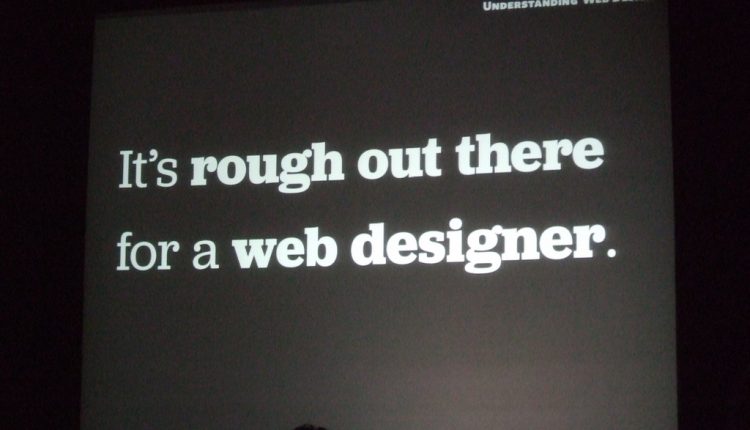When I view the Internet marketing landscape through the lens of an IT professional, I routinely come back to a fundamental conflict – most companies have at least two teams which are responsible for the performance of the website.
 One team – the IT team – is responsible for the functional performance of the site. The other team – the marketing team – is responsible for the business performance of the site. Unfortunately, the performance of these two objectives are frequently misaligned.
One team – the IT team – is responsible for the functional performance of the site. The other team – the marketing team – is responsible for the business performance of the site. Unfortunately, the performance of these two objectives are frequently misaligned.
Marketing professionals face distinct challenges to launch and maintain Web-based initiatives. They must constantly quantify business returns through the website, yet they frequently do not have the tactical (technical) tools at their disposal to make this happen.
This means that they must routinely coordinate their initiatives through the IT team. Aside from the traditional hurdles of culture and jargon, marketers can also be stymied by an expanding and splintering list of roles that may be present in any company’s “Web team.”
I have often seen marketers spin their wheels because they direct their requests to members of the Web team who are either ill-equipped or, in some cases, forbidden to fulfill the marketer’s request. Like a shopper who asks a butcher for a loaf of bread, the marketing team too often finds itself directing its requests to any member of IT who will listen – and then becoming frustrated when those requests are ignored or the final product fails to live up to the marketing vision.
For this reason, I believe it may save some headaches if we spend some time simply defining the typical roles in corporate Web teams. More importantly, you should know that every role on the IT team represents certain skills that could drive the success of your marketing campaign – or sabotage it before it ever gets off the ground.
So over the summer, I’m going to blog about these roles to help you get the most value from your IT resources. In this first installment, I’m going to address one of the most generic and misunderstood roles on a Web team – the Web designer.
“Web designer” pseudonyms
- UI Designer
- Multimedia Designer
- Technical Web Designer
- Web Producer
In your company, this role might be lumped in with
- Web Developer
- Graphic Artist
- Webmaster
- Web Content Manager
What they probably can do for you
- Translate your specifications into a visual representation of the site/page
- Site/page mock-ups
- Converting designs into static pages (HTML)
- Installing and configuring third-party widgets (Flash, Javascript)
- Creating site graphics
- Creating Flash animations (except those containing full-fledged application logic)
- Manipulating and optimizing existing graphics
- Manipulating style sheets (CSS)
- Making basic copy edits to existing pages
- Installing tracking snippets into pages (Google Analytics)
- Configuring content via a CMS
- Ensuring that sites/pages are standards-compliant
What they probably can’t do for you
- Creating, altering, or troubleshooting custom applications – especially those which require database access
- Developing scripted widgets from scratch (Javascript, Flash)
- Installing or configuring any software on the Web/application/database servers
- Securing applications against hacking vulnerabilities
- Optimizing sites for performance (except optimizing graphics)
- Formulating direct queries against a database
- Writing extended, professional copy
What you need to know about web designers
“Web Designer” is one of the most generically overused titles on corporate web teams. Marketers often take it to mean “the person who kinda does everything on the website,” but then they are disappointed to find that this person can’t actually do everything on the website. Be careful that you don’t simply throw out the “Web designer” moniker every time you feel that you need to have anything accomplished in a Web-based environment.
The average Web designer would prefer that you place the emphasis on the word “designer.” They are most comfortable in graphic manipulation tools (Photoshop) or What You See Is What You Get (WYSIWYG) editors like Dreamweaver.
They usually skew more towards the artistic side and less towards the technical side, although they should be comfortable enough in a Web environment that they can translate any of their designs into a working page of HTML. They are adept at all of the stylistic elements of a page – meaning that they should be extremely fluent in CSS and Javascript (to the extent that Javascript affects the presentation of the page itself). In more enlightened marketing organizations, there are one or more Web designers who report directly to marketing.
Most web designers have either minimal programming skills or none at all (HTML and CSS are not programming languages). To put this into technical terms, the web designer may not be capable of building applications with tools like .NET, C#, PHP, Java, Objective C, Flex, or SQL.
Unless you are certain that your Web designers have specific experience in the area of application development, do not ask them to build anything that requires detailed logic or database access. Web designers with actual programming skills tend to be weak on design and strong in programming, or vice versa. The designer who actually writes strong, effective code and creates pleasing, artistic designs is a rare bird who should be kept around at all costs.
The artistic skill of a Web designer is a key asset, but one that can spoil your marketing campaign if it is allowed to run free of any guidelines or constraints. For example, if your Web designers do not specifically have training in the Offer/Response-Optimization process and they are given free rein to design landing pages, you could end up with offers that are absolutely gorgeous yet stunningly ineffective.
If you are embarking on a significant site launch or redesign, do not wait until the eleventh hour to pull the designers into the discussion. Ultimately, the strategic direction of a site must be reflected in every aspect of that site – including such mundane elements as font, palette, and graphics.
If you spend three months planning your site in a vacuum and only involve the Web designers at the exact moment when you want to commence creation, don’t be surprised to find that the designer’s product does not adequately communicate your strategic vision.
Related Resources
Technology Blind Spots: How human insight revealed a hidden (and almost missed) 31% gain
The MarketingExperiments Quarterly Research Journal, Q1 2010




(stands and applauds enthusiastically)
On my website resume intro page: “Graphic Designers design graphics, but not necessarily websites. Web Designers design websites, but not necessarily graphics. Web Developers put together code in a variety of languages to provide functionality for websites – but they don’t necessarily design websites or graphics.”
I saw a YouTube video yesterday that goes along with the topic of this blog. The title? “Your Web Designer Isn’t a Marketer – You Must Control the Marketing Process!”